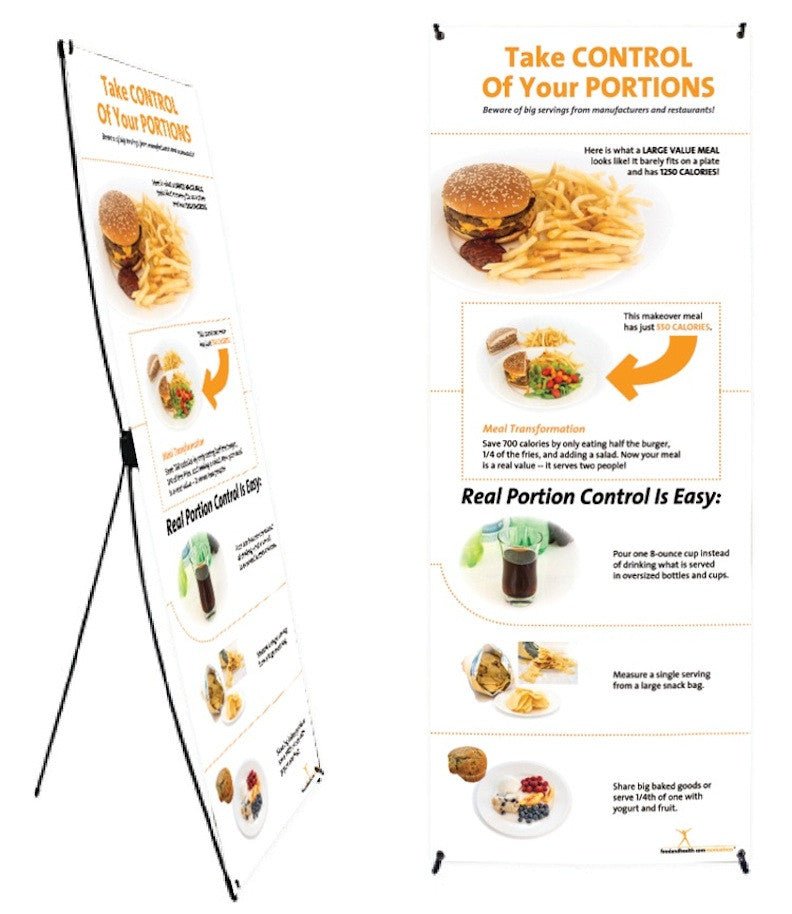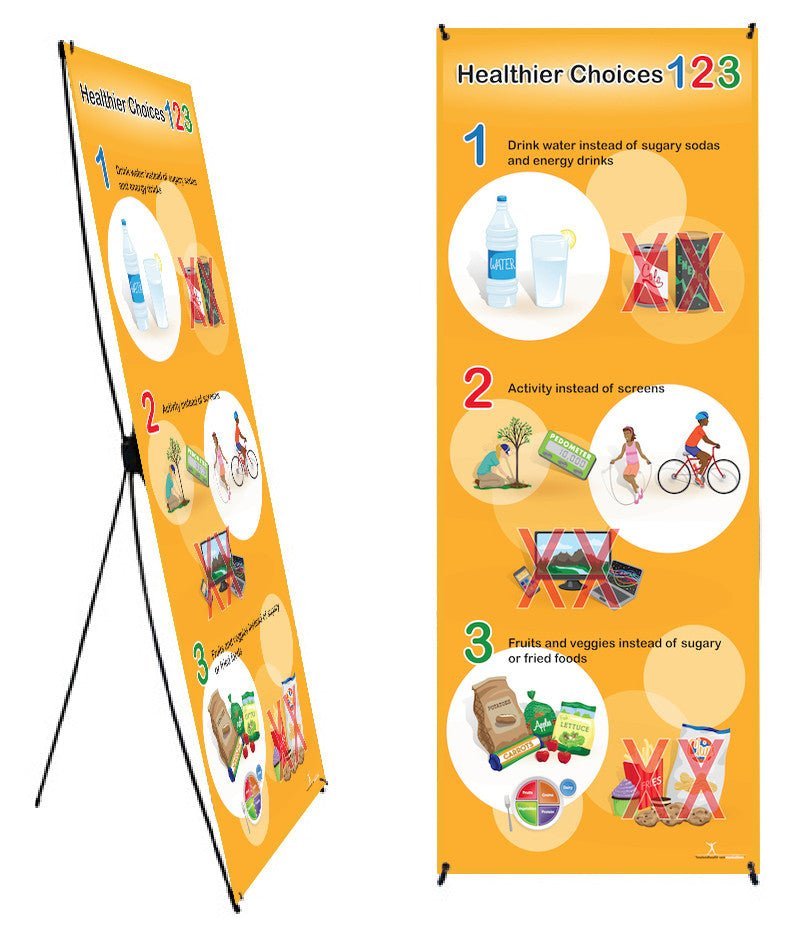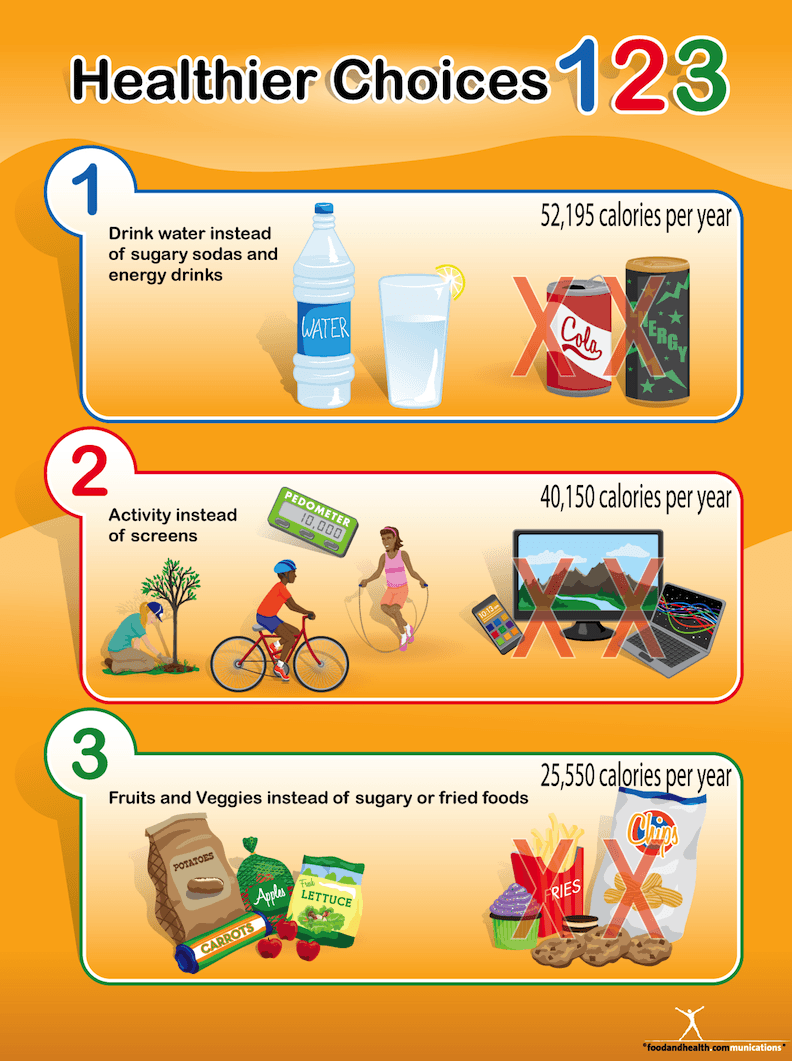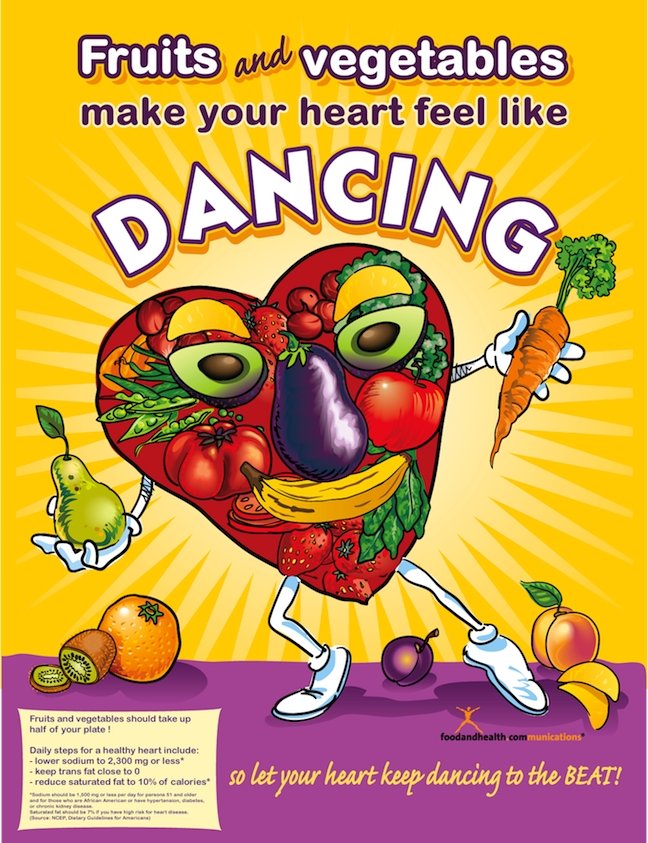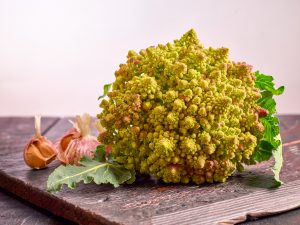The Nutrition Facts label is a valuable tool, but many people don’t use it. Maybe they’re in a hurry and don’t take time to read it. Or maybe they see a bunch of numbers and unfamiliar terms and turn the package right back over.
Tufts Researchers estimate that the new food label, showing added sugars, could save up to $31 billion dollars in health care expenses over 20 years. The amount saved for societal costs is about double that amount.
Our Food Label theme has lots of options for helping your clients make sense of the Nutrition Facts panel. A good place to start – our simple Food Label handouts, poster, and banner. This version breaks it all down to the basics, making the Nutrition Facts label easier for everyone to understand and use.
Take a look at our simple Food Label Handout Tearpad. One side has an easy-to-read Nutrition Facts panel with three basic tips on how to read it:
- Step 1 is to Count Calories – check the serving size, calories per serving, and number of servings per package.
- Step 2 is to Check These for Heart Health – choose foods that are lower in saturated fat and sodium; keep trans fat to zero.
- Step 3 is to ask Is This Nutritionally Valuable? – select foods that are nutrient dense and a good source of fiber.
The other side is a very handy MyPlate Healthy Shopping List featuring healthy choices:
- Fruits
- Vegetables
- Lean protein
- Whole grains
- Low fat and low sugar dairy products
- Other foods (like condiments and seasonings)
As you are shopping, why not create a small bookshelf of interesting packages that have good lessons? Some examples include bottles of beverages that look like one serving but are 3. Or healthful sounding rice mix packages that have a full day’s supply of sodium in a small 160 calorie serving. Or the soup that says reduced sodium that is still high in sodium for the calories it contains? And of course there is the “all natural food” that is filled with saturated fat. I am sure you have a lot of examples. These can make great ice breakers for classes, counseling sessions, and health fairs. And it can make for a fun, find the best label contest if you offer a variety of choices for the same food like a tomato soup or can of beans or packages of frozen entrees.
These handouts are the perfect start to learning to shop for healthier food. If you want a more in-depth approach, check out our Food Label Math banner, poster, and tearpad.
By Hollis Bass, MEd, RD
Get 15% off all food label education items this week only by using this link.
References:
- https://now.tufts.edu/news-releases/fda-added-sugar-label-could-be-cost-effective-way-improve-health-generate-savings
- https://www.sciencedaily.com/releases/2014/11/141104141731.htm

New Food Label Vinyl Banner and Banner Stand 26" X 67"
$125.00 $135.00
Add to Cart

New Food Label Vinyl Banner 48" X 36"
$88.00 $110.00
Add to Cart





